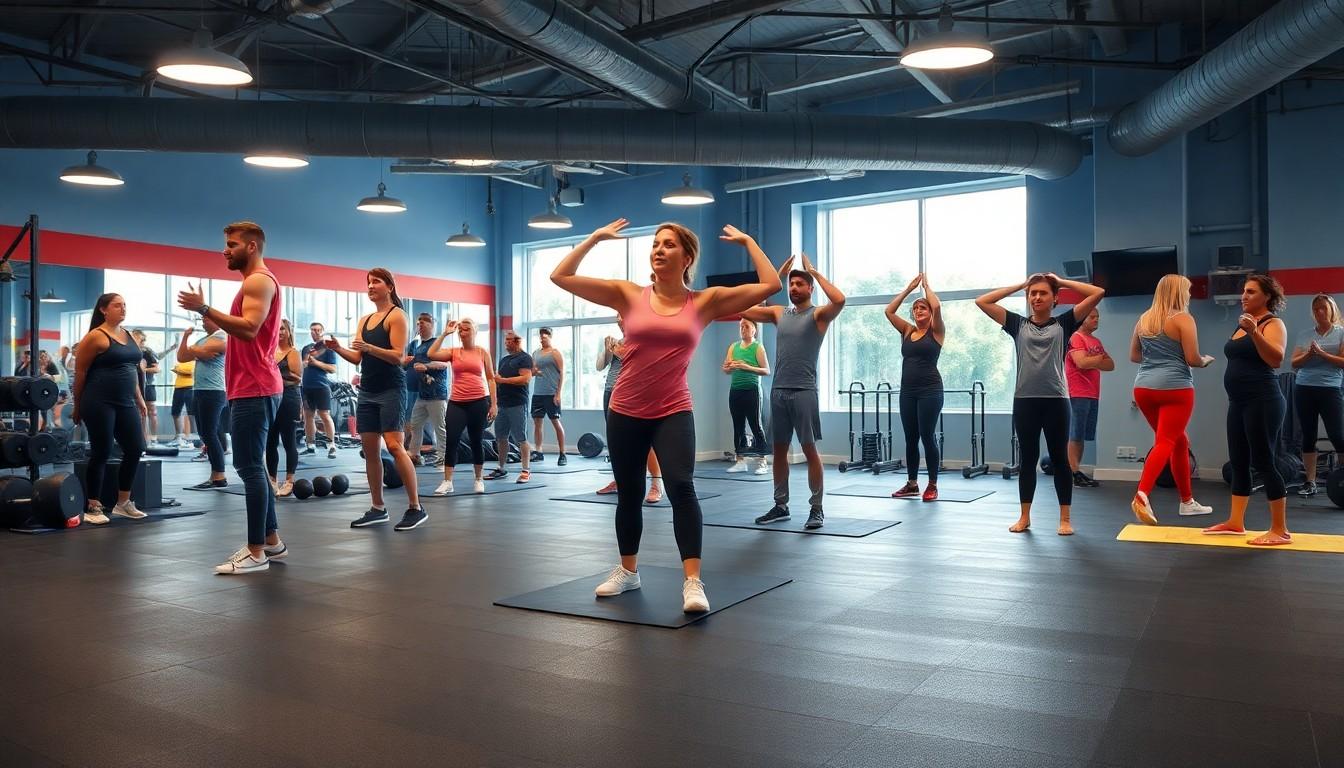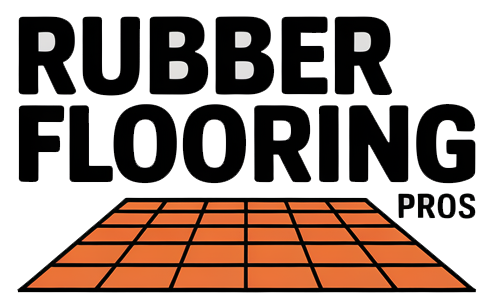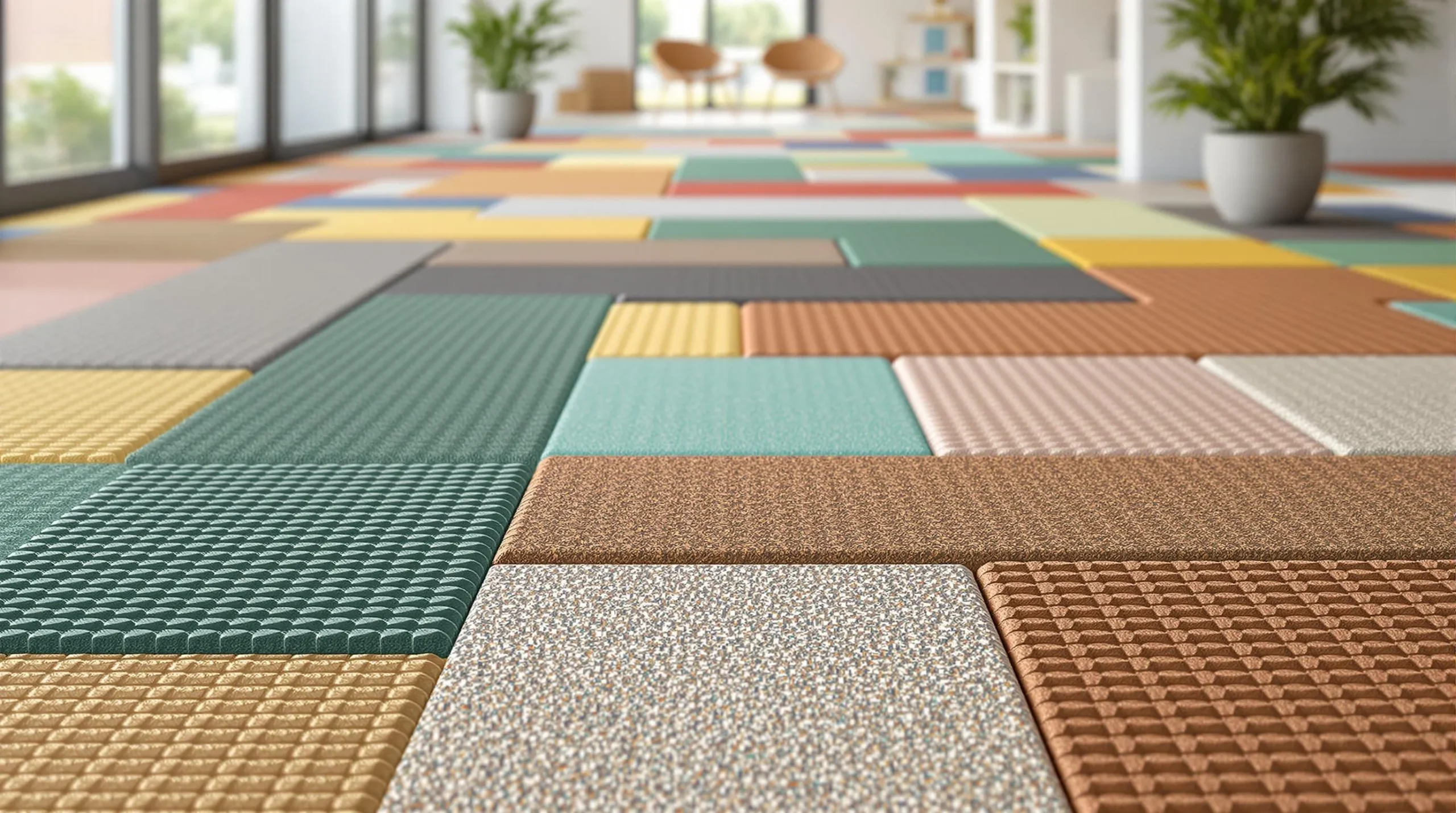Transform your space with rubber mat flooring – a versatile solution that’s revolutionising modern interiors. Whether you’re looking to upgrade your home gym workout area or create a safe play zone for children this durable flooring option offers the perfect blend of comfort and functionality.
Looking for a practical yet stylish flooring choice? Rubber matting delivers exceptional shock absorption superior slip resistance and remarkable sound dampening properties. It’s an increasingly popular choice for both residential and commercial spaces thanks to its easy maintenance and long-lasting performance. Plus with an array of colours patterns and textures available you’ll find options to match any design scheme.
Key Takeaways
- Rubber mat flooring offers exceptional durability with lifespans ranging from 10-25 years, depending on the material type and quality chosen
- The flooring comes in four main types: interlocking tiles, roll mats, individual mats, and custom-cut pieces, suitable for various residential and commercial applications
- Key benefits include superior shock absorption (up to 30% more than traditional flooring), excellent sound dampening (12-22 dB reduction), and remarkable slip resistance
- Installation costs range from £25-£75 per square metre, with premium EPDM options offering the best long-term value through extended lifespan and reduced maintenance
- Regular maintenance is straightforward, requiring daily sweeping, weekly damp mopping with pH-neutral cleaners, and quarterly deep cleaning for optimal performance
What Is Rubber Mat Flooring
Rubber mat flooring consists of interlocking or individual mats made from natural or synthetic rubber materials designed for various applications. These versatile floor coverings provide protection impact resistance shock absorption.
Types of Rubber Floor Mats
Rubber floor mats come in 4 primary configurations:
- Interlocking Tiles: Modular pieces that connect like puzzle pieces creating seamless surfaces
- Roll Mats: Large continuous sheets ideal for covering extensive areas
- Individual Mats: Standalone pieces for specific spots like equipment areas or walkways
- Custom Cut Mats: Precisely sized pieces designed to fit unique spaces or requirements
- Natural Rubber: Harvested from rubber trees providing excellent elasticity durability
- Synthetic Rubber (EPDM): Engineered material offering enhanced UV resistance colour stability
- Recycled Rubber: Made from repurposed vehicle tyres containing 90% post-consumer materials
- Rubber Composites: Blends incorporating additional materials like:
- Cork particles for improved comfort
- Polyurethane for increased durability
- Nylon fibres for enhanced strength
| Material Type | Durability Rating | Average Lifespan |
|---|---|---|
| Natural Rubber | 8/10 | 15-20 years |
| EPDM | 9/10 | 20-25 years |
| Recycled Rubber | 7/10 | 10-15 years |
| Composites | 8.5/10 | 15-20 years |
Benefits of Rubber Mat Flooring

Rubber mat flooring offers multiple advantages that make it an ideal choice for diverse applications across residential and commercial spaces. Here’s a detailed look at its key benefits:
Impact Absorption and Safety
Rubber mat flooring provides superior shock absorption properties that reduce joint stress during physical activities. The material’s natural elasticity absorbs up to 30% more impact than traditional flooring options, protecting against injuries from falls. This cushioning effect creates a safer environment in:
- Gymnasiums with high-intensity training areas
- Children’s playrooms requiring fall protection
- Physical therapy centres conducting rehabilitation exercises
- Commercial spaces with extended periods of standing
Durability and Longevity
Rubber mat flooring maintains its structural integrity under intense use conditions for 15-20 years. The material resists:
- Heavy foot traffic without showing wear patterns
- Equipment damage from weights up to 150kg
- Stains from water spills or chemical exposure
- UV radiation in sunlit areas
- Temperature fluctuations between -30°C to 50°C
- Exercise areas with dropping weights
- Multi-level buildings requiring sound insulation
- Commercial spaces with heavy equipment
- Dance studios needing echo reduction
| Sound Reduction Benefits | Decibel Reduction |
|---|---|
| Standard Thickness (8mm) | 12-14 dB |
| Premium Thickness (12mm) | 15-18 dB |
| Impact Sound (Weights) | Up to 22 dB |
Popular Applications

Rubber mat flooring serves diverse environments with its adaptable features, making it a practical choice for numerous settings. Its versatility extends across commercial, industrial, residential and athletic facilities.
Commercial and Industrial Uses
Rubber mat flooring excels in high-traffic commercial environments where durability meets safety requirements:
- Retail spaces: Installation in supermarkets, shopping centres and department stores for employee comfort
- Warehouses: Coverage in loading bays, packaging areas and forklift paths
- Manufacturing facilities: Protection for assembly lines, workstations and machinery zones
- Healthcare settings: Application in hospitals, clinics and laboratories for anti-fatigue properties
- Educational institutions: Use in corridors, cafeterias and technical workshops
Residential Spaces
Home applications of rubber mat flooring focus on functionality in specific areas:
- Home gyms: Installation for exercise equipment and free weight zones
- Children’s playrooms: Coverage for safe play surfaces and noise reduction
- Utility rooms: Protection in laundry areas and tool storage spaces
- Garages: Durability for vehicle parking and workshop activities
- Basements: Moisture resistance for below-grade spaces
- Commercial gyms: Coverage for free weight areas and cardio zones
- CrossFit boxes: Impact absorption for Olympic lifting and drop zones
- Yoga studios: Comfort for low-impact exercise routines
- Indoor sports courts: Traction for multi-purpose athletic spaces
- Physical therapy centres: Support for rehabilitation equipment and activities
| Facility Type | Recommended Thickness | Average Lifespan |
|---|---|---|
| Commercial | 8-12mm | 10-15 years |
| Residential | 6-8mm | 15-20 years |
| Athletic | 15-20mm | 7-12 years |
Installation and Maintenance
Rubber mat flooring installation methods vary based on the mat configuration, while proper maintenance ensures optimal performance and longevity. Both aspects require specific techniques and regular attention to detail for best results.
Installation Methods
Professional installation guarantees precise fitting of rubber mat flooring through these proven approaches:
- Measure the installation area accurately, adding 5% extra material for cuts
- Clean the subfloor thoroughly, removing debris, dust or old adhesive
- Level uneven surfaces with appropriate floor levelling compound
- Apply adhesive evenly for permanent installations, using manufacturer-recommended products
- Position interlocking tiles from the centre outward for proper alignment
- Leave 6mm expansion gaps around walls for temperature fluctuations
- Cut edge pieces with a sharp utility knife for precise fitting
- Allow 24-48 hours curing time before heavy use
- Sweep daily with a soft-bristled broom to remove loose dirt
- Vacuum with a beater bar-free attachment twice weekly
- Damp mop weekly using pH-neutral cleaners designed for rubber
- Spot clean spills immediately with microfibre cloths
- Deep clean quarterly using automated scrubbers or rotary machines
- Avoid harsh chemicals including bleach, ammonia or oil-based products
- Place entrance mats at doorways to reduce tracked-in dirt
- Inspect seams monthly for lifting or separation
- Rotate mats in high-traffic areas every 3-6 months
- Apply rubber floor sealant annually in commercial settings
| Cleaning Task | Frequency | Tools/Products |
|---|---|---|
| Sweeping | Daily | Soft-bristled broom |
| Vacuuming | 2x weekly | Vacuum without beater bar |
| Damp mopping | Weekly | pH-neutral cleaner |
| Deep cleaning | Quarterly | Automatic scrubber |
| Sealing | Annually | Rubber floor sealant |
Cost Considerations
Rubber mat flooring costs vary based on material quality, thickness, and installation requirements. Understanding the complete cost structure helps in planning your investment effectively.
Initial Investment vs Long-Term Value
The upfront cost of rubber mat flooring ranges from £25-£75 per square metre based on material specifications:
| Type | Cost per m² | Installation Cost per m² | Typical Lifespan |
|---|---|---|---|
| Basic Recycled | £25-£35 | £10-£15 | 7-10 years |
| Premium EPDM | £45-£65 | £15-£20 | 15-20 years |
| Custom Design | £60-£75 | £20-£25 | 12-15 years |
The long-term value offsets the initial investment through:
- Reduced maintenance costs compared to carpet or hardwood
- Lower replacement frequency due to 10-20 year lifespan
- Decreased injury-related expenses from improved safety features
- Energy savings from enhanced insulation properties
Premium rubber flooring delivers cost advantages through:
- 40% longer lifespan than basic options
- 25% reduction in maintenance expenses
- Enhanced durability in high-traffic areas
- Superior resistance to damage from heavy equipment
The total ownership cost calculation includes:
- Material price per square metre
- Professional installation fees
- Annual maintenance supplies
- Replacement costs over time
- Energy efficiency benefits
- Insurance premium reductions from enhanced safety
- Commercial gyms with heavy equipment use
- Industrial facilities with constant foot traffic
- Educational institutions with high daily wear
- Healthcare settings requiring frequent sanitisation
Conclusion
Rubber mat flooring stands out as a smart investment for any space where durability safety and comfort are priorities. Whether you’re equipping a home gym planning a commercial facility or upgrading your industrial space rubber matting delivers exceptional value through its versatility and long-lasting performance.
The combination of impact absorption noise reduction and easy maintenance makes it an ideal choice for various applications. With options ranging from basic recycled materials to premium custom designs you’ll find a solution that fits both your needs and budget.
Consider rubber mat flooring as more than just a practical choice – it’s an investment in safety comfort and longevity that will serve your space well for years to come.
Frequently Asked Questions
What is rubber mat flooring?
Rubber mat flooring consists of natural or synthetic rubber materials formed into interlocking tiles, roll mats, individual mats, or custom-cut pieces. It’s designed for various applications and comes in different thicknesses and configurations to suit specific needs.
How long does rubber mat flooring last?
The lifespan varies by application: residential installations typically last 15-20 years, commercial applications 10-15 years, and athletic facilities 7-12 years. With proper maintenance and care, rubber flooring can exceed these estimates in optimal conditions.
Is rubber mat flooring suitable for home gyms?
Yes, rubber mat flooring is ideal for home gyms. It provides excellent shock absorption, noise reduction, and protection for both equipment and subfloor. The recommended thickness for home gym applications is 6-8mm, offering durability and comfort for various exercises.
How do you clean rubber mat flooring?
Maintain rubber mat flooring with daily sweeping, weekly vacuuming and damp mopping, and quarterly deep cleaning. Use mild soap and water for regular cleaning, avoiding harsh chemicals. Annual sealing is recommended to protect the surface and extend longevity.
How much does rubber mat flooring cost?
Rubber mat flooring typically costs between £25-£75 per square metre, depending on quality, thickness, and design. Basic recycled options are most affordable, while custom designs command premium prices. Installation costs are additional but vary by project scope.
Can rubber mat flooring reduce noise?
Yes, rubber mat flooring significantly reduces noise. The thicker the mat, the better the sound dampening properties. It’s particularly effective for multi-level buildings, exercise areas, and commercial spaces, reducing impact noise and vibrations.
Is rubber flooring slip-resistant?
Yes, rubber mat flooring provides excellent slip resistance, making it safer for wet areas and high-traffic zones. The natural texture and composition of rubber create friction, reducing the risk of slips and falls in both dry and wet conditions.
How thick should rubber mat flooring be?
Thickness requirements vary by use: 6-8mm for residential applications, 8-12mm for commercial spaces, and 15-20mm for athletic facilities. Choose thickness based on intended use, traffic levels, and impact absorption needs.

